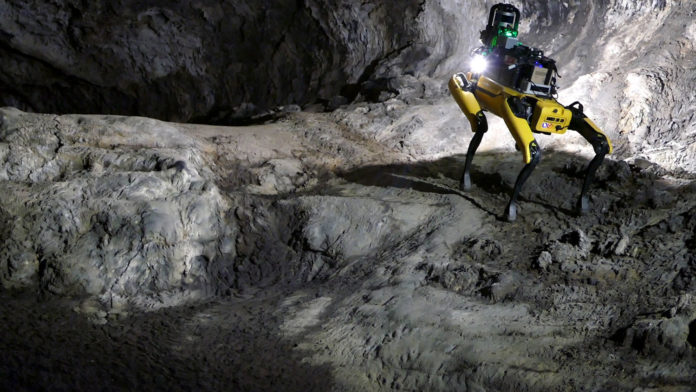The current autonomous mobility systems for exploring other planets have relatively simple four- or six-wheeled rovers. They are limited to flat, gently-sloping terrains and agglomerate regolith. These vehicles cannot tolerate instability and operate within a low-risk envelope.
To fix this, a group of scientists from NASA-JPL/Caltech, NASA Ames Research Center, and McGill University is working on the next evolution of extreme planetary exploration. They are developing ‘Mars Dogs’ (MD), four-legged robotic dogs installed for autonomous navigation on rugged terrain and underground caves of the Red Planet.
Their project is based on the operating experience of Boston Dynamics “Spot” quadruped, endowed with a high-level autonomy/AI framework referred to as “NeBula,” developed by our JPL/Caltech Team CoSTAR. Mars Dogs will act in much the same way as Spirit, Opportunity, Curiosity, and Perseverance, but they will be able to do much more. These new four-legged robots will be more maneuverable, lightweight, compact, and fast-moving compared to Perseverance.

A pack of MDs consists of three individual robotic units: one (Alpha-MD) equipped with a deep cave exploration payload including an arm; and two (Tether-MD) equipped with a tethering system. Each Mars Dog is equipped with sensors and deployable communication nodes to facilitate live, subterranean-to-surface data transmission. One of the units carries an MMRTG power supply.
Mars Dogs will be able to rise if they fall on the difficult terrain of Mars. Modern all-terrain vehicles cannot do that. It seems that “dogs” will remain the best friends of man on another planet. The team is currently testing a Martian dog to overcome several different obstacle courses on Earth. It learns to go through tunnels, climb stairs and ramps, as well as in places resembling the surface and dungeons of Mars.
The team of researchers presented their plan at the annual American Geophysical Union (AGU).
Sending such robot dogs to Mars could revolutionize planetary research. It will help NASA prepare for future missions to caves on Mars and other rocky bodies, as the agency continues its ongoing hunt for life in the universe. There is no exact date yet when Mars Dogs will be launched.
